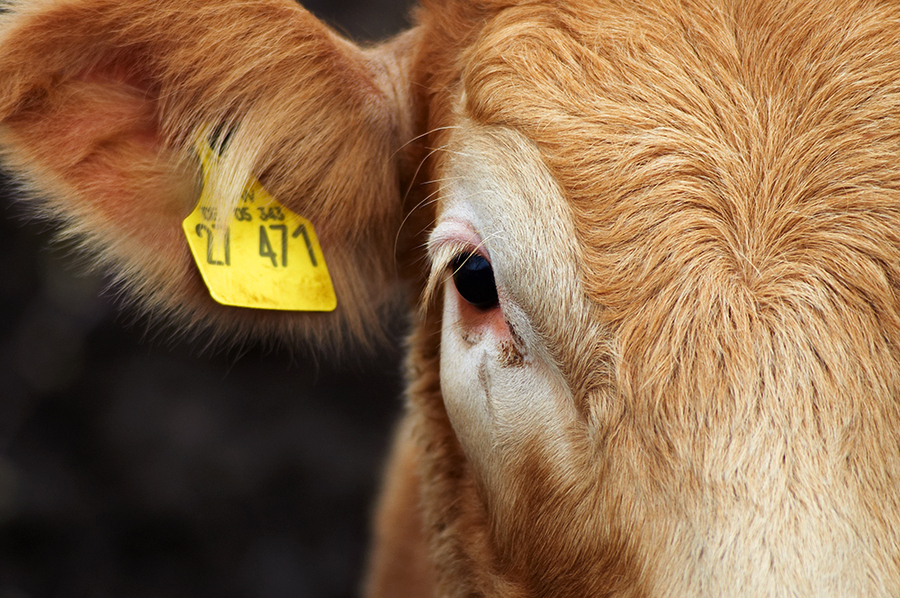
Hundreds of thousands of people march worldwide, from London to São Paulo. Banners demand new habits from companies, from governments and from us. The focus of change lies in new transport technologies and cleaner energy. However, an easy way to solve many immediate issues with global warming is through our stomachs. Abstain from meat, and save our planet.
As many know, methane (CH4) is a byproduct of ruminant livestock farming. Animals such as cows and sheep (ruminant animals) graze and produce methane, due to digestion-aiding bacteria, known as methanogens, in their stomachs. This is then released into the atmosphere, where it stays and traps heat, contributing to global warming. Consequently, the rapidly expanding meat industry worldwide has caused methane to hold 14% of global green house gas emissions today. Compared to CO2, methane gas is 30 times more potent and has a lifespan of 12 years compared to approximately 100 years for CO2. With increasing temperatures, methane may outstrip carbon dioxide as the most prevalent green house gas, according to the Global Methane Initiative, meaning that by 2020, methane emissions are expected to increase by 15%. Fossil fuel extraction contributes to these numbers, however, more than half of all methane is emitted agriculturally. Therefore, countries which have large amounts of these emissions are also large exporters of meat. Argentina, Brazil, USA, and New Zealand all have inordinately large emissions from the meat industry, and they are growing. From the 1960s to today, the amount of cattle in the Amazon Basin has increased from 5 million to 70-80 million, cutting down rainforests and using land not suited for cattle ranching and releasing methane as a consequence. Simultaneously, in the United States, nearly half of its land in the 48 lower States is dedicated to animal agriculture, land which is not always suited to this practice either. A rapidly expanding meat industry means rapidly increasing methane emissions, which contributes massively to global warming.
These current, vast and increasing amounts of CH4, means that meat bears a heavy price tag. However, this is not the only factor raising its cost. Another one is animal manure. 2500 cows produce as much waste as a city of 411,000 people. While this in itself is incredible, the way this manure is handled is damning, because it isn’t handled. Most traditional farms have no waste handling capacities, or in any case have no sufficient technologies to do so. In other words, this highly nutrient-rich waste is dumped wherever, often near water sources. This means that the waste is allowed to leak into waterways, as agricultural runoff, which causes eutrophication and changes aquatic habitats. For instance more than 500 nitrogen-flooded dead zones in our oceans, equalling more than 95,000 square miles of areas with no life, are due to animal agriculture’s runoff, according to the environmental researcher Dr. Richard Oppenlander. Simultaneously, this same industry uses 1/3 of the world’s available fresh water, even while it poisons it. The problems are so closely tied to one another, that Dr. Oppenlander says: “Any meaningful discussion about the state of our oceans has to always begin with frank discussions about land-based animal agriculture”.
If animal agriculture is producing copious amounts of methane, using land unsustainably and killing our oceans, what can we do? The answer is an obvious one. We need to change our eating habits. The average Swede eats 70 kg meat and chark products per year, says Elinor Helström at Lunds University. This is unsustainable as, the newspaper The Economist states: “you need about 15,000 litres of water to produce a kilo of beef but only 1,250 litres for a kilo of maize or wheat”. With expected water shortages, such a thirsty industry, can in no way be legitimate. Curbing meat consumption would mean to eliminate these green house gas emissions and water-uses from your environmental footprint. In fact, turning vegetarian means using half an acre of land per year, compared to 6 acres for a meat eater, solving the land issue. Turning vegan brings this land use down to 1/3 of an acre per year (according to the documentary Cowspiracy). With as many as 353,000 babies born daily, according to UNICEF, land-intensive farming (such as meat) cannot sustain these future populations, as we don’t have enough farmable land to sustain these habits. With just 17% of daily caloric intake worldwide being through meat, and this already being called unsustainable, the increasing trend towards meat is clearly destructive. Therefore, we have to change our dietary habits now, in order to provide for both future and current populations in the best possible way.
People are marching worldwide. People are marching and eating. The question is what and how much. Currently, western meat habits are unsustainable, and increasing habits globally are unsustainable as well. The hidden global warming through animal agriculture is seen as a non-issue for many, even though it contributes to deforestation, loss of biodiversity, oceanic dead zones and rising temperatures worldwide. As an individual, the choice of turning vegetarian or vegan directly impacts the industry which is causing so much harm to our ecosystem. If everyone stopped eating meat, many of our issues with global warming would be solved. Bring justice to Earth now: the steaks are too high.

